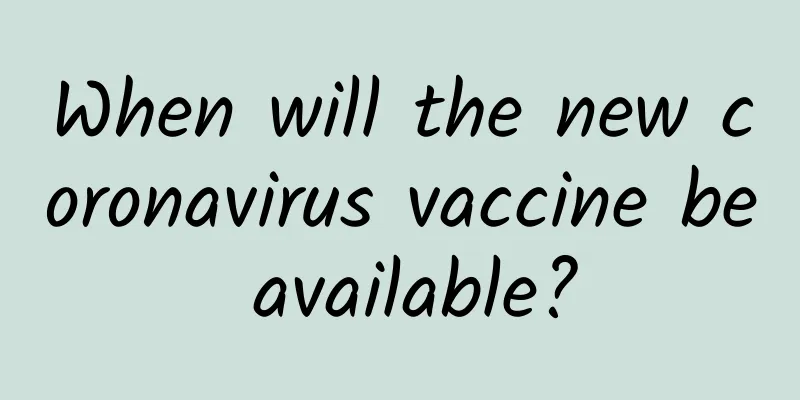What is "sublingual thrombectomy"? What are its effects? This article will help you understand it clearly

|
In the pursuit of health, people are constantly looking for effective treatment and prevention methods. In fact, there is an ancient and unique treatment in the field of traditional Chinese medicine - sublingual thrombectomy, which may bring new solutions to these health problems. What kind of magic does it have, and for which groups of people can it bring good news? Professor Luo Yunhua, Director of the Center for Disease Prevention and Health Management of Hunan Provincial Hospital of Integrated Traditional Chinese and Western Medicine (Affiliated Hospital of Hunan Institute of Traditional Chinese Medicine), has the answer for you. 1. What is sublingual thrombectomy?Sublingual thrombectomy is a traditional Chinese medicine treatment method that involves using special needles or blades to puncture specific acupuncture points to bleed in order to promote blood circulation and improve certain health problems, thereby achieving the purpose of treating or preventing diseases. The earliest Chinese medicine acupuncture therapy can be traced back to the Bianstone therapy in the Neolithic Age. The "Pulse Method" silk book unearthed in Mawangdui, Changsha, has recorded the specific method of "opening the pulse" to treat diseases. "Huangdi Neijing Lingshu" has a special "Blood Vessel Theory", which systematically expounds the treatment principle of "observing the blood vessels and pricking out the blood". Among them, the "two veins under the tongue" are particularly emphasized, and it is believed that this is the key pathway to clear the blood stasis in the heart meridian. During the Song and Yuan dynasties, sublingual thrombus removal technology became mature. The Acupuncture and Moxibustion Zisheng Jing recorded in detail the location and acupuncture method of the "Jinjin Yuye" acupoint. The Ming Dynasty's Acupuncture and Moxibustion Dacheng listed sublingual bloodletting as the first choice for treating "stroke tongue stiffness". The Qing Dynasty Warm Disease School expanded this method to heat entering the pericardium syndrome, forming a complete theoretical system. Traditional theory holds that the tongue is the orifice of the heart, and the sublingual vein is directly connected to the heart meridian. When blood stasis blocks the heart meridian, bleeding here can quickly dredge the meridians and restore the circulation of qi and blood. This treatment concept of "tonifying by unblocking" is in line with the holistic view of traditional Chinese medicine. 2. Why is sublingual thrombectomy necessary?The sublingual area of a normal person is usually pink, moist and smooth, and the sublingual veins are light blue. However, once the human body is affected by external evil or internal injuries, the blood circulation of the body is blocked, and the veins are blocked, which in turn affects the function of the internal organs, and the external manifestation is disease. Harmful substances that are blocked in the body, such as blood stasis, are collectively referred to as thrombi. They manifest as thick and forked veins under the tongue, and are bluish purple, crimson purple, or purple-black in color. At this time, sublingual thrombus removal can be performed. By removing the blood clots and expelling the blood stasis, the blockage can be cleared, allowing qi and blood to flow smoothly and restoring the functions of the internal organs. 3. Who is suitable for sublingual thrombectomy? What are its effects?1. People with cardiovascular and cerebrovascular diseases . Sublingual thrombectomy can help remove blood clots in blood vessels, improve circulation, and prevent and treat cardiovascular and cerebrovascular diseases. 2. People with three highs . Sublingual thrombectomy can remove blood clots and bleed to lower blood sugar, blood lipids and blood pressure. 3. People with chronic gastrointestinal diseases . Sublingual thrombus removal can promote circulation, improve gastrointestinal function, and promote digestion and absorption of food. 4. People with chronic fatigue syndrome . Sublingual thrombectomy can promote blood circulation, relieve fatigue and improve the body's immunity. 5. People with a history of surgery . Sublingual thrombectomy can help remove blood clots and impurities from blood vessels after surgery, and prevent and treat postoperative complications. 6. Healthy people . Sublingual thrombectomy can also be used as a preventive health care method to remove blood clots and impurities in blood vessels and prevent the occurrence of cardiovascular and cerebrovascular diseases. 4. What are the contraindications for sublingual thrombectomy?Sublingual thrombectomy is not recommended for patients with severe coagulation disorders, severe anemia, hypotension, severe hypertension (blood pressure above 170 mmHg), infectious diseases, patients with a history of heart stents or bypass surgery, pregnant women, patients with ulcers and infections at the base of the tongue, and patients in the acute phase of the disease. 5. What should you pay attention to when removing sublingual thrombus?1. First, assess the patient's physical condition to see if the patient can cooperate with and tolerate sublingual thrombectomy. 2. During the thrombectomy, attention should be paid to the concept of sterility to prevent infection; at the same time, the patient's condition should be observed during the bloodletting process to prevent the patient from fainting, coma, etc. 3. After the thrombectomy is completed, stop the bleeding in time and inform the patient to keep the mouth clean, avoid drinking, smoking, and eating overly spicy foods.
(Edited by YT) |
>>: [Medical Q&A] Can hepatic hemangioma be treated with ultrasound intervention?
Recommend
Menstruation delayed for six days with lower abdominal pain
If the menstruation is delayed for six days and t...
Can I take cold medicine just after my period?
During menstruation, women's bodies become ve...
For people with heart disease, walking is the most suitable form of exercise, and exercising the lower limbs is safer.
An elderly friend told Huazi that he had coronary...
What are the methods of contraception?
There are many methods of contraception. For thos...
Why do we put soybeans in bitter melon soup? How to make bitter melon soup not bitter
Soybean is one of the important food crops in my ...
How to make milk and honey mask
The milk and honey mask can effectively help us r...
Gynecological inflammation levodopa medication
With the development of medical technology in our...
What are the benefits of eating durian when preparing for pregnancy?
Durian is a fruit that is not cheap, and it is no...
Treatment for small breasts and large nipples
Nowadays, more and more women are suffering from ...
“Choose ingredients according to your needs” to see which Laba porridge is suitable for you?
Today is Laba Festival, and there is a tradition ...
What can I eat to make my period come faster? Female friends can eat like this
Female friends will pay close attention to the ti...
How long does menstruation usually last?
Menstruation is a sign of women's maturity, b...
How to manage jasmine in winter so that it can bloom? Why doesn't jasmine bloom in winter?
Many flower lovers want jasmine to bloom in winte...
Why didn't I have my period this month?
Girls have their periods every month after pubert...
How many months into pregnancy should calcium supplementation be started?
With the improvement of living standards, the phy...









